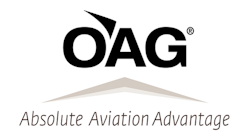In an industry recognized for its cyclical performance, the last decade has represented a golden era for the airline industry with record returns, rapid capacity growth, modest fuel costs and exciting technological advancements in an increasingly efficient and digital world. The cyclical nature of the industry has begged the question of when the market will reach the top of that cycle and perhaps more importantly, how steep will the fall be if and when we look over the edge of that peak.
The second half of 2018 has provided some early insights into how slippery that slope could be if 2019 is the tipping point in that cycle. The collapse of some airlines in Europe, excessive transatlantic capacity, reductions in international trade between major global powerhouses and a steady increase in the cost of fuel are all contributing factors, but what does that mean in terms of predictions for 2019 and beyond?
Airline consolidation is expected
Some 900 plus airlines currently file schedules with OAG -- in North America alone, there are around 97 airlines, and in Europe over 220 airlines. Such a range of suppliers in any market would be high, and in a capital-intensive industry such as aviation it is perhaps too many. Either by merger, failure or graceful strategic partnerships, it is likely that we will see further consolidation of airlines in both Europe and North America in the next few years. A big market share is ultimately beautiful for airlines because it reduces their network exposure, allows points of critical mass to be achieved and results in positive levels of return on investment (ROI), something that is much needed. Airlines with small market shares will always be niche, vulnerable markets increasingly open to more competition and regulatory ownership protection – previously a barrier to consolidation falling away in many parts of the world.
Infrastructure will struggle to meet demand
With current levels of capacity increasing at more than six percent each year, keeping pace with those levels of growth has created many challenges around the globe. Airport capacity has been stretched in many major cities, capacity limits reached at many large airports and air space congestion has become a real issue – especially when increasing environmental and industrial actions limit capacity in major markets. While new airports in Istanbul and Beijing will become fully operational in 2019 – increasing competition amongst some airlines – the industry faces a real challenge next year to meet expected demand in many markets. Travellers should expect more delays and disruption as the “growing pains” continue, and the increasing interest and publication of on-time performance data will only heighten awareness of what airports and airlines use or should avoid.
With resources scarce, artificial intelligence adoption will increase
When profitability falters, cost savings or efficiency improvements become a focal point for airline CEOs. In 2019, we will see more and more use of biometric data and artificial intelligence to improve passenger processes and alleviate resource challenges for airlines by enabling passengers to find their way to their seats without any human contact aside from a security check. The industry is also facing a severe pilot shortage, and unfortunately, 2019 will not see the introduction of pilotless flights to alleviate the pain, but as one airline CEO said, “It’s a matter of when rather than never,” before we accept single cockpit crews and ultimately unmanned commercial services.
“Value for money” travel will become a key focus
Simple economics say too many seats, too few passengers and prices will fall. In 2019, we will see too much capacity in many markets, although U.S. domestic services may be one area where available capacity remains stretched. New airlines with low-cost bases will compete on price while established network carriers using the New Distribution Capability (NDC) of the industry will offer new simplified products from which they hope increased ancillary revenues can be generated. The historic industry measurement of “yield” per passenger will be changed to reflect “revenue per passenger” as the “seat” cost becomes a means of attracting travellers who can then purchase other services and features as part of their travel. Airlines will truly embrace the concept of travel retailers rather than transportation providers.
Sector definitions will continue to change
With airlines from all sectors increasing similar in-flight product and service offerings, 2019 may be the year when new sector definitions emerge. Point-to-point and network airlines will see a more reflective set of descriptors than the current low-cost and legacy terminology we use today. After all, is JetBlue always a lower cost option than United Airlines, or is Southwest that different from American Airlines on a transcontinental sector? As the industry moves into a new decade with change happening faster than ever before, we need to recognize and follow that change.
Expect to be surprised
Finally, expect the coming year to provide some surprises that we haven’t predicted. Fast moving and economically crucial, the world of commercial aviation springs surprises every year, even in the most mature markets. 2019 will be no different than previous years in that regard, so seat-belts on and enjoy the journey!
About John Grant
One of the most respected aviation experts in the industry, John’s analysis has been featured in major publications including CNN, USA Today, BBC, the Financial Times, TIME and more. John captures and analyses complex aviation data and industry trends to provide commentary on what’s driving changes in the travel market. He’s served as a featured speaker at major industry events including the CAPA Americas Aviation Summit, the CAPA World Aviation Summit, the Routes Online Strategy Summit and more. John previously managed and worked to enhance OAG’s product portfolio and new product development.





